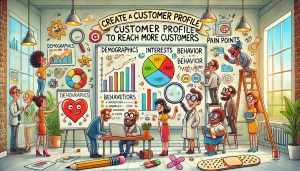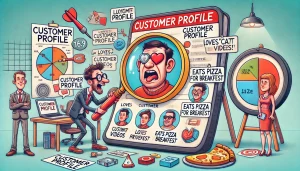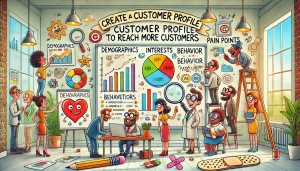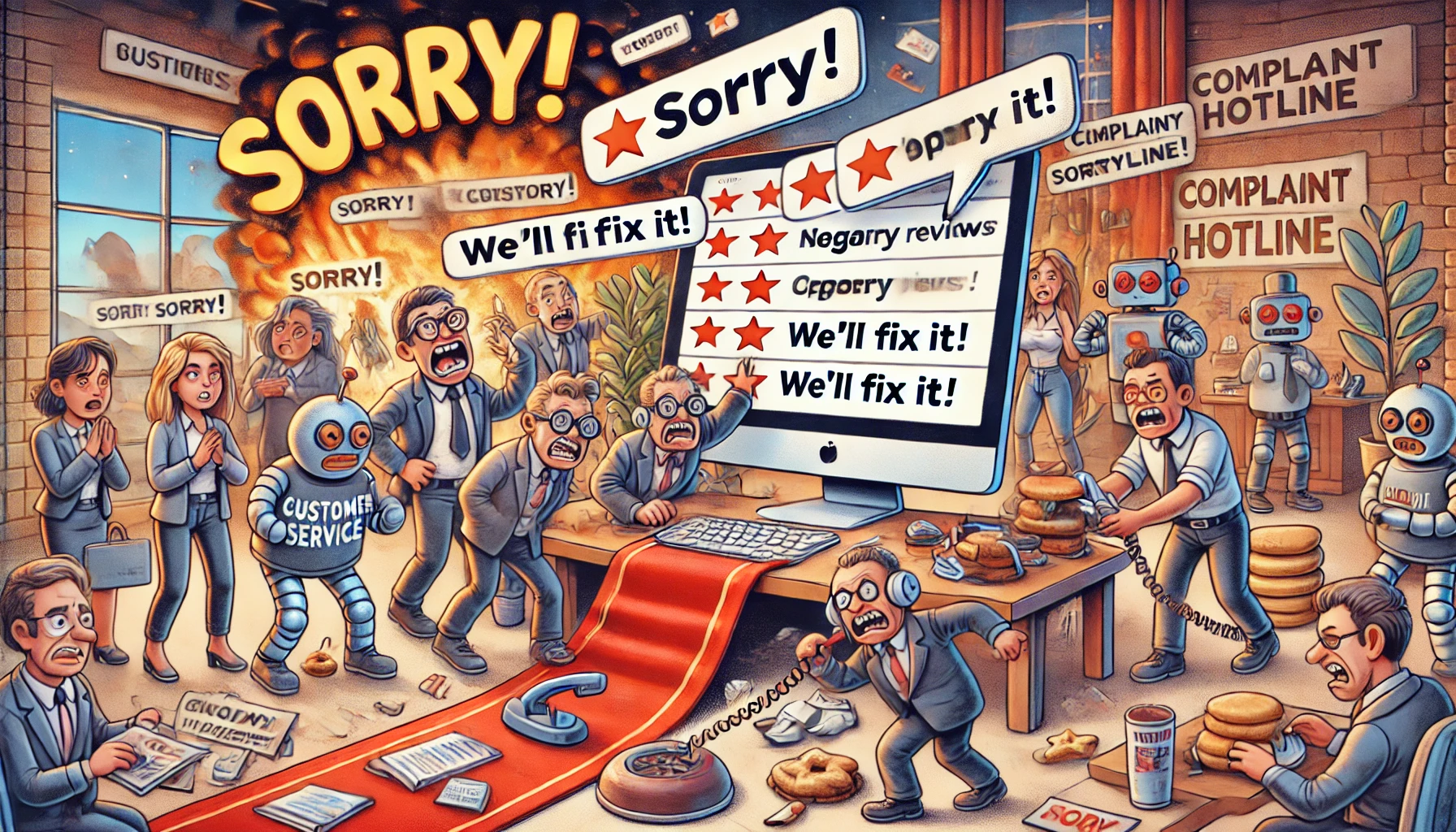How to create an effective customer profile: Boost sales, reach more

Mastering customer profiling for business success
Understanding customer profiling
Customer profiling is a critical component in crafting a business’s strategy. It involves an in-depth analysis of who your current customers are and predicting who your future customers might be.
This practice is essential not only for developing targeted marketing strategies but also for guiding sales teams and shaping product development.
Recent research shows that companies using customer profiling see a 55% increase in marketing campaign success rates (Salesforce, 2022).
What is a customer profile?
A customer profile is a detailed document that outlines a segment of your target market. It provides insights into their needs, buying habits, interests, pain points, motivations, demographics, and interaction history with your business or competitors.
This comprehensive information helps you understand how customers engage with your brand, enabling you to assess and enhance customer satisfaction.
The importance of customer profiling
Profiling is crucial for understanding client needs and boosting marketing effectiveness. It allows you to target ideal customers more precisely, increase marketing efficiency, boost sales, and identify better prospects.
According to a study by McKinsey, businesses that use customer profiling effectively can reduce acquisition costs by up to 50% (McKinsey, 2022).

Benefits of customer profiling
Here’s how customer profiling can benefit your business:
Tailor your messaging to meet specific needs.
Customize marketing materials to resonate with different segments.
Personalize interactions to build trust and loyalty.
Strengthen relationships between your business and your clients.
Customer profiling can lead to a 25% increase in customer satisfaction when marketing and service interactions are personalized (Gartner, 2022).
Types of customer profiles
Different businesses require various types of customer profiles:
B2B customer profiles: For businesses serving other businesses, profiles include data such as company size, industry, location, revenue, and key contact information.
B2C customer profiles: Focus on individual consumers, detailing demographics like age, gender, and purchasing behavior.
Geographic profiles: Include physical location details, local shopping preferences, and cultural characteristics.
Demographic profiles: Segment customers by personal characteristics such as education level, job title, income, and marital status.
Behavioral profiles: Define customers by their spending habits, product usage, and feedback, which is useful for cross-selling or upselling.
A Harvard Business Review study found that companies using behavioral profiling were 60% more likely to understand their customers’ needs (Harvard Business Review, 2022).
How to create a customer profile
Creating customer profiles can be straightforward with the right approach:
Use a template: Start with a customer profile template to streamline the process.
Analyze existing customers: Examine the backgrounds and behaviors of current customers to gather relevant data.
Consolidate data: Organize and review all collected data to identify important trends and insights.
Draft profiles: Create initial profiles and refine them based on feedback from your team and customer interactions.
Visualize your ideal customer: Clearly define your ideal customer based on accumulated data and ongoing feedback to fine-tune your marketing strategies.
Effective customer profiling can lead to a 39% increase in sales when profiles are used to inform marketing strategies (Forrester, 2022).

Strategic advantages of customer profiling
Enhanced targeting and acquisition: Profiling enables businesses to identify and target potential customers who are more likely to engage with their brand.
Effective lead qualification: Through customer profiling, sales teams can qualify leads more effectively, ensuring that efforts are concentrated on nurturing relationships with prospects that are most likely to convert, improving both efficiency and return on investment.
Improved customer experience: Knowing your customers better allows you to enhance their interaction with your brand at every touchpoint.
Increased customer loyalty and retention: Detailed customer profiles help personalize marketing and sales efforts, enhancing the overall customer experience. This personalization can lead to increased customer loyalty, with 94% of customers stating that positive experiences make them more likely to make repeat purchases (Salesforce, 2022).
Comparing customer profiling and segmentation
While customer segmentation groups customers based on common characteristics such as demographics and location, customer profiling goes a step further by integrating behavioral data and market insights. This comprehensive approach not only groups customers but also delves into their buying habits and preferences, providing a deeper understanding of the target audience.
Customer profile vs. buyer persona
Although sometimes used interchangeably, customer profiles and buyer personas serve different purposes. Customer profiles are data-driven and used primarily for identifying viable leads at the start of the sales funnel.
In contrast, buyer personas are more generalized, fictionalized representations used throughout the marketing process to simulate the typical buyer.
Key components of effective customer profiling
Successful customer profiling is based on thorough research and the integration of a wide array of data, including demographics, market insights, customer behavior, and customer journey analysis across different channels and touchpoints within the company.
Using customer profiling software
To streamline the creation and management of customer profiles, many businesses turn to specialized software. This technology helps automate the data integration process, ensuring that profiles are both accurate and actionable.
Customer profiling is not just about understanding who your customers are, but also about using that knowledge to make smarter business decisions. From product development to marketing and sales, a well-crafted customer profile is a critical tool in any business’s arsenal, aiming to succeed in a competitive marketplace.

Expert opinions on how to create an effective customer profile
Dr. Ava Clarkson, Consumer Behavior Analyst “The foundation of an effective customer profile lies in robust data collection. It’s not just about gathering data, but about integrating qualitative insights such as customer motivations, preferences, and pain points. This approach allows businesses to craft highly personalized marketing strategies that resonate on a deeper level.”
Marcus Yeon, UX Designer “Understanding the user journey is critical when creating customer profiles. Mapping out every touchpoint along the customer’s journey can reveal unexpected insights and opportunities for engagement, helping businesses to not only reach but also retain their customers.”
Oliver Thomsen, Data Scientist “The most effective customer profiles are those that utilize both demographic and psychographic data. While demographic data gives you an outline, psychographic data fills in the details by providing insight into the customer’s lifestyle and behavior, making your marketing campaigns more relevant and effective.”

 6 min
6 min 






